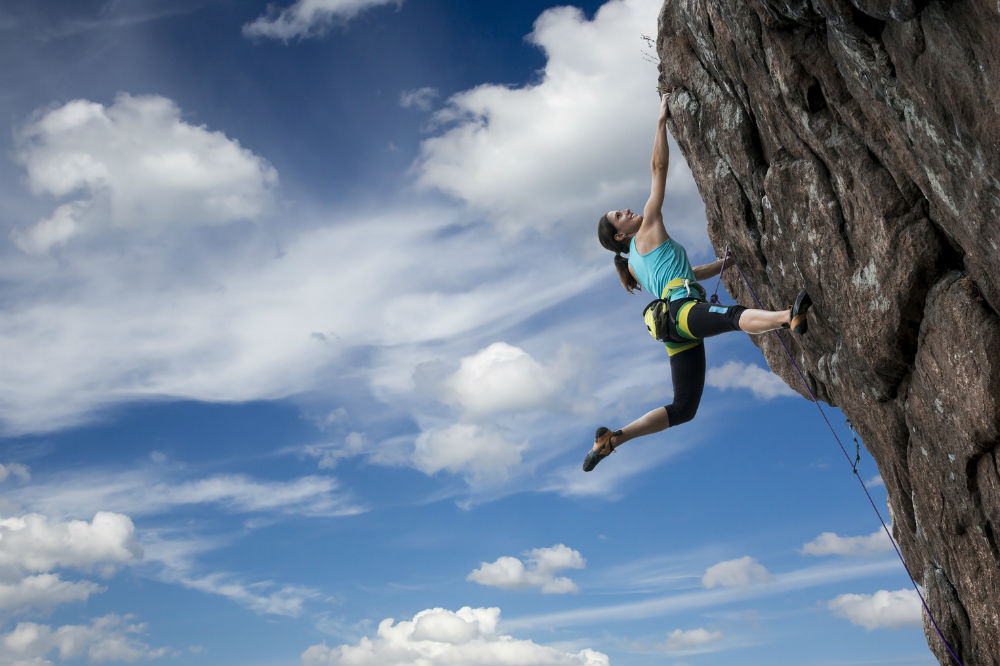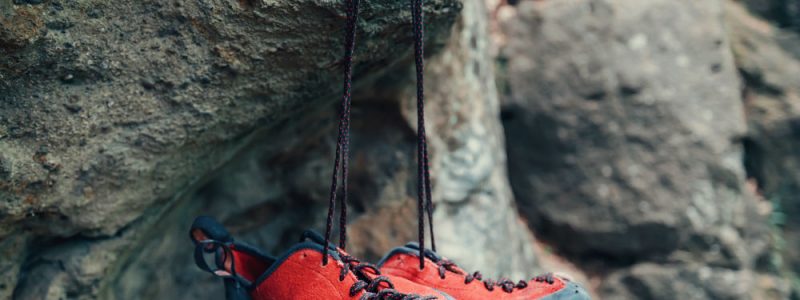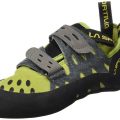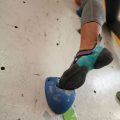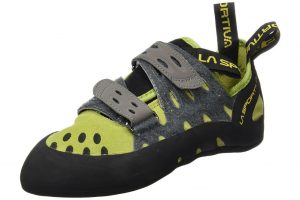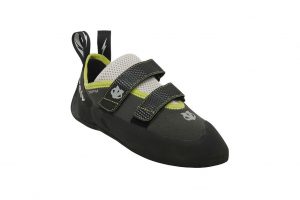Being the interface between you and the rock itself, the right type of climbing shoe can truly elevate your experience. There are, however, quite a few things that you might want to take into proper consideration when it comes to choosing the best one.
There are three general types of climbing shoes. The differentiation is made based on the foot rest and it’s incredibly important to determine the type of climbing that you want to go for when picking one.
With this in mind, let’s go right ahead and take a look at the three main types of climbing shoes.
Neutral climbing shoes
These are specifically designed to offer a rather relaxed fit for an entire day of comfort. They have a flat foot rest, allowing your toes to conveniently lie flat inside.
They are generally suggested for beginner climbers. The main reason for this is because they tend to be a lot more comfortable than the other two types of climbing shoes.
However, thanks to the convenience of the flat foot rest, they are also a very common and a perfect pick for experienced climbers who want to undertake a semi-mild climb or want to go for some in-door gym training.
These are perfect for all-day wear, which makes them great for multi-pitch climbing undertakings.
Of course, as it is with every other product, neutral climbing shoes also have their advantages and disadvantages. Let’s have a look.
The Pros:
- They provide comfort throughout the entire time of wearing
- They have an almost entirely flat profile which makes them perfect for crack slotting
- Typically, they come with medium or stiff midsoles as well as thicker rubber ones in order to provide the ultimate support.
The Cons:
- The thicker soles that these shoes tend to come with are a lot less sensitive than the thinner ones which are implemented on the moderate as well as the aggressive types
- The shoes are not designed for difficult or for overhanging routes as they tend to be a lot more relaxed and comfortable
Moderate climbing shoes
When it comes to moderate climbing shoes, the main differentiation criteria is that they are a bit more downturned in terms of shape. This is also the reason for which they are called camber.
This particular characteristic makes the best and the most common choice for people who want to undertake technical climbing.
However, it’s safe to say that the mild downturn shape is easily the thing which characterizes them as all-purpose shoe which are capable of handling crack climbs, slab routes as well as slightly overhung sport routes and longer multi-pitch climb challenges.
This is easily amongst the most flexible and versatile type of shoe that you will find on the market.
There are a few disadvantages but they are usually overlooked because of the significant benefits that come with this particular type.
The Pros:
- They usually come with a stickier rubber and also thinner soles in comparison to neutral shoes. This provides a far better grip and a durable sensation.
- They are more comfortable than aggressive shoes – that’s for sure.
- The specific slightly downturned shape is going to put your feet in a much more reliable and stronger position in comparison to neutral shoes. This is going to help you climb routes which are more challenging.
The Cons:
- They are less comfortable when compared to neutral shoes.
- As we mentioned, the soles are usually stickier rubber and a lot thinner than neutral boots. This is why they also tend to wear a lot faster in comparison.
- They are not as performance-oriented when stacked against aggressive shoes, which makes them a bit less suited for particularly challenging boulder and overhung routes.
Aggressive shoes
Now, the last type of climbing shoes called aggressive is particularly characterized by a very downturned shape as well as a lot of tension on your heels. This is specifically designated to put your feet in a very powerful, reliable and strong position.
If you are going to tackle overhanging and particularly challenging climbs, aggressive shoes are what you are looking for.
The most aggressive ones also come with a significantly asymmetric shape which is going to curve down towards your big toe. This channels a lot of power to it in order to provide you with precise placement for holds which are a lot smaller.
Climbers would usually use those for single-pitch short and sport climbs as well as for climbing routes at the gym as they aren’t very comfortable for long multi-pitch climbs.
The Pros:
- They have stickier as well as thinner soles in comparison to neutral shoes which is guaranteed to provide you with a more reliable feel and grip.
- They provide durable and reliable feeling which is going to put your feet in a strong position. This guarantees that you can tackle overhanging sports climbs up to the highest standards.
The Cons:
- They are a lot less comfortable in comparison to both neutral and moderate shoes.
- The specific downturn shape doesn’t fit really well into cracks as well as moderate and neutral shoes do.
Now, as you can see, these are the three basic types of shoes. The differentiation is made based on the downturn and the overall position of the foot rest.
All of these are specifically designated for different types of climbing undertakings. In other words – there is no such thing as the best type of climbing shoes.
You need to be aware of what you need the shoe for in order to make a reasonable and informed choice. However, it’s very important that you are perfectly aware of the specifications of these shoes so that you can know which one is best for the type of climbing that you have in mind.
This will allow you to be precise in your search and to know what is it that you are looking for when it comes to it.
